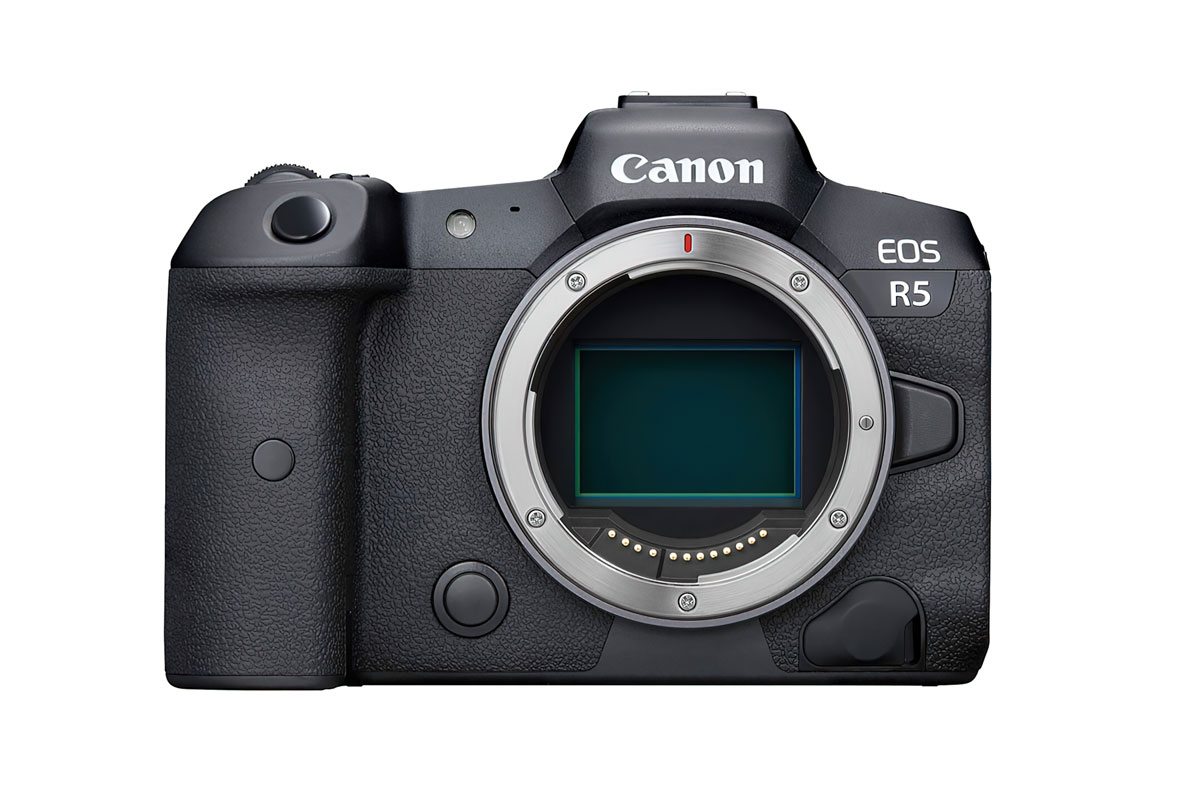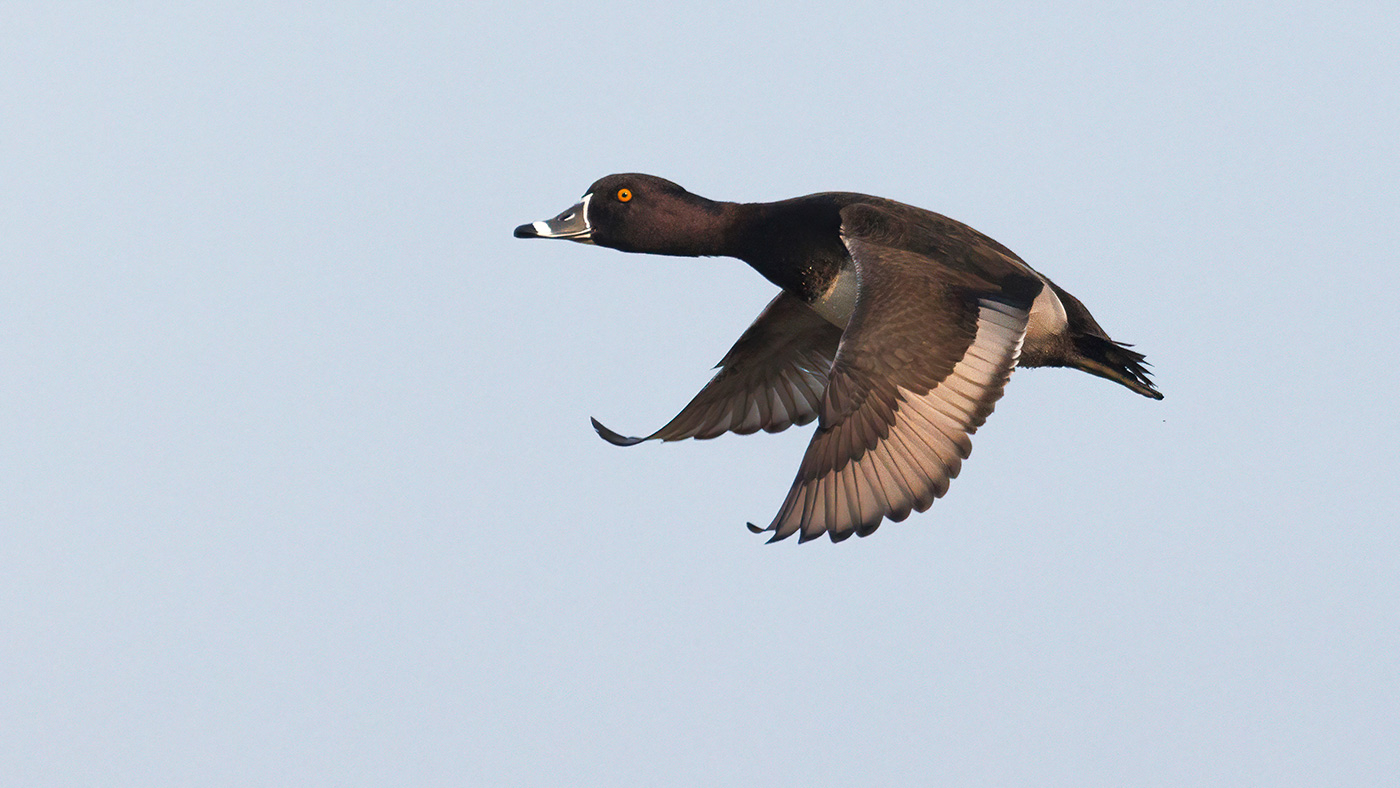Canon EOS R5 digital camera
'The future is mirrorless' is a phrase I've been hearing for a few years now, yet until recently I hadn't seriously considered switching from my trusty 'birders' combo' of the Canon 7D II with Canon EF 100-400 mm II lens.
Like many birders, my gear takes a bit of a battering in the field from daily use and, having just written off my trusty 7D, I took the plunge in August 2021 and purchased a Canon R5.
Firstly, at a smidgen over £4k, it's not cheap. I couldn't afford to upgrade my lens (to the Canon RF 100-500 mm) simultaneously, so purchased the mount adapter so that my current 100-400 would work with the R5. Everything took a bit of time getting used to, as you'd expect; I am certainly not an expert photographer and so this review comes from the perspective of a birder who takes photos.

For those used to the 1.6x crop factor of the 7D cameras, it's worth noting that the R5 has a full-frame sensor (as in the 5D series), so immediately you lose a bit of magnification. However, it produces 45-MP files, so you can crop quite significantly and still have loads of pixels at your disposal. A big plus.
I minimised the loss of range by adding a 1.4x converter to the set-up. This means a minimum of f8 aperture, and thus slower shutter speeds unless you crank up the ISO. However, the R5 is a massive improvement on the 7D II in terms of noise, so it can take the ISO increase to some degree. It's also worth highlighting that the R5 has 1.6x crop mode which produces 17-MP images.
This does mean that I have lens, camera, converter and adapter all attached together, which makes the set-up a bit more cumbersome than before. However, the R5 weighs 738 g compared to the 910 g of the 7D II, so this is negated slightly. Additionally, I used the RF 100-500 mm coupled with the R5 on one weekend recently and found it to be far lighter and more portable when compared to my 100-400 mm setup, so can see the appeal of a lens upgrade.
How did it perform? In summary, my set-up worked extremely well in some situations, but quite poorly in others. I'll start with the good points. The new Eye Control AF system is brilliant for birds in flight – I am getting so many more 'keepers' with the R5 than I was with the 7D II and have been really impressed with how quickly it focuses on the correct subject, assuming it's not a tiny dot in the viewfinder (when things can become tricky). It performed even better when coupled with the RF 100-500 mm; the focus was instantaneous and the lens combination just felt really 'sharp'. Additionally, if a perched subject is close enough (by that, I mean pretty close!), then the focus rarely lets you down and the image quality is excellent.

The camera is excellent for birds in flight (Josh Jones).
However, there are drawbacks. One of these, which I can't quite understand, is why the AF points are so large. This means that if you have a moderately distant subject, which either doesn't fill or barely fills the AF point – especially so against a messy or similar-coloured background – then the AF can completely miss the intended target and instead focus on the background. I found it to be particularly bad at distant ducks on gravel pits (a staple of my winter birding), with plenty of shots of out-of-focus birds with pin-sharp waves just beyond. On a couple of occasions, I found this to be so poor that I ended up having to switch to manual focus to obtain records. It even struggled with a huge white bird (a Great Egret) against a dark green-and-brown background of winter vegetation, frustratingly preferring to focus on the latter instead.
My initial results when trying macro photography were very good despite the large AF points still making focusing a lottery, even on a roosting moth – it just required taking plenty of photos until one with the right focus was achieved.
Mirrorless may well be the future but I'm not convinced that, for the birder at least, the R5 is the answer. This is no criticism of the camera itself. When it works, it works brilliantly. But for the average UK birder, often confronted with distant or wary birds in suboptimal light conditions, it's a bit of a struggle to achieve consistently sharp photos. Others I know give a more positive review of the R5, especially those with longer lenses that can negate some of the problems posed by a distant subject. Coincidentally, Canon has recently released the R7, which has the 1.6x crop factor and therefore a bit more reach – perhaps this will be the game changer?
Further info
- Price: £4,299
- Size: 138.5 x 97.5 x 88mm
- Weight: 738 g
- Sensor: 45 MP CMOS
- ISO: 100-51,200
- FPS: 20 with mechanical shutter
- Storage slots: 1x CF, 1x SD
- Other features: 5,940 AF positions, 8K video, WiFi
- Warranty: Canon European Warranty System
Verdict
+ More compact and lightweight than Canon 1D/5D/7D models
+ Phenomenal performance on birds in flight
- Significant focusing struggles with distant birds


